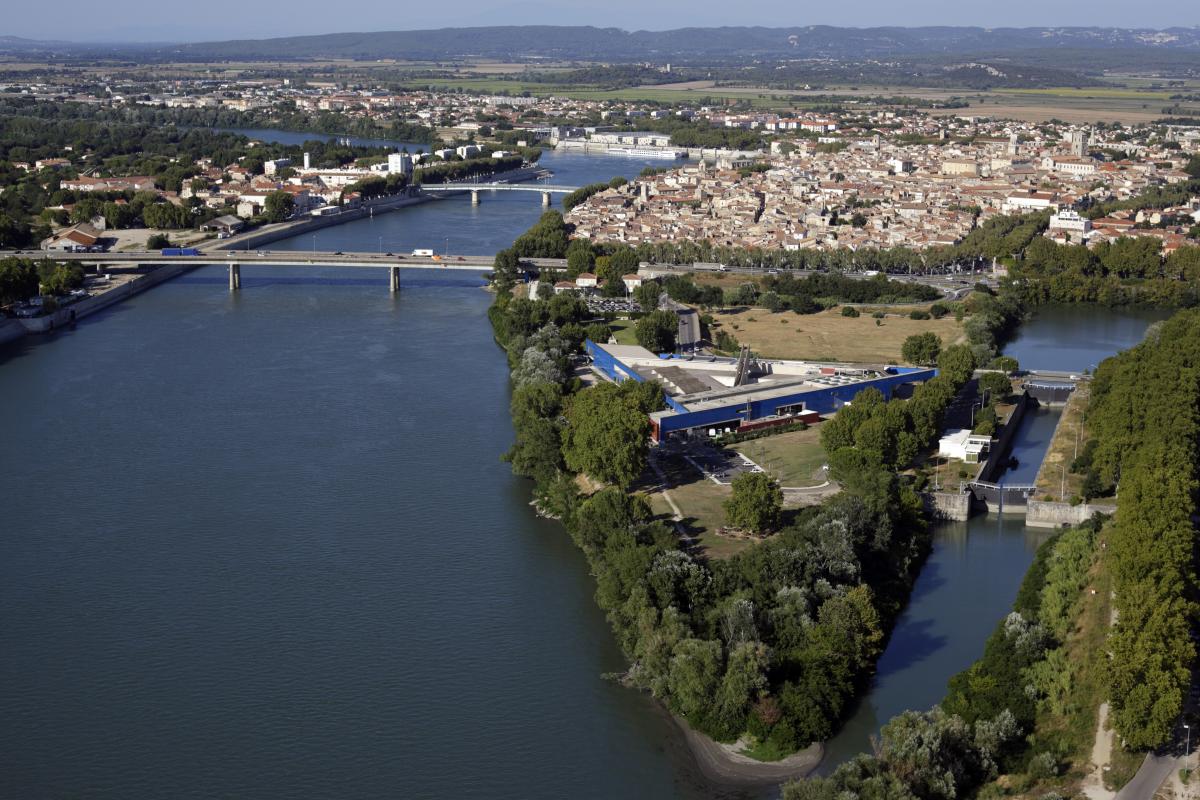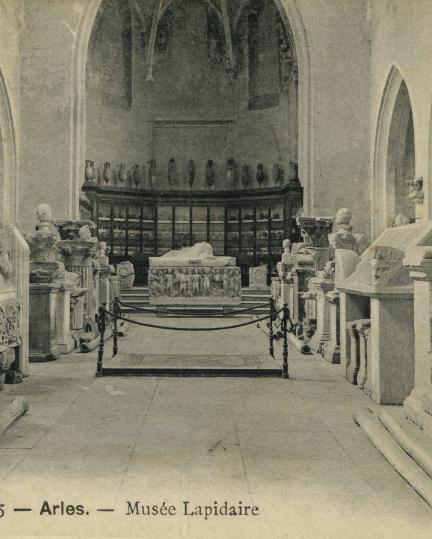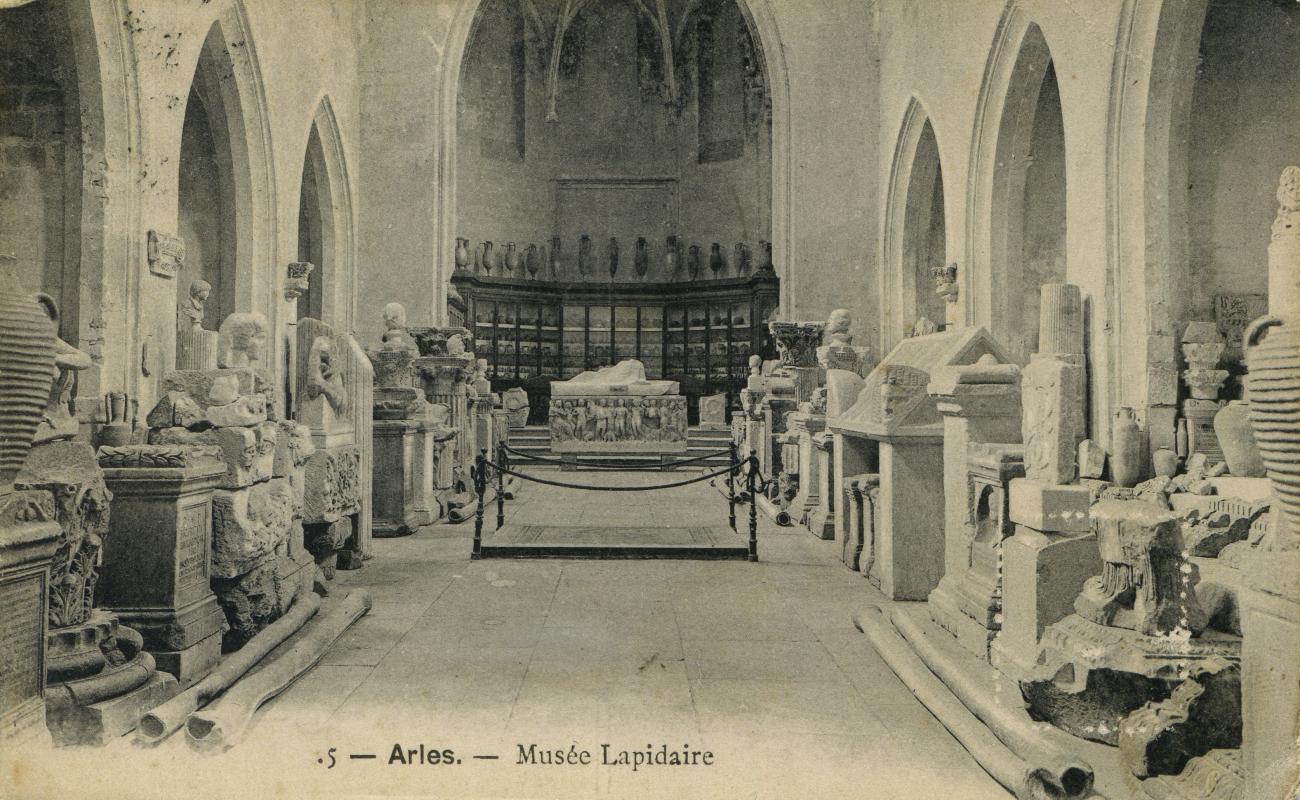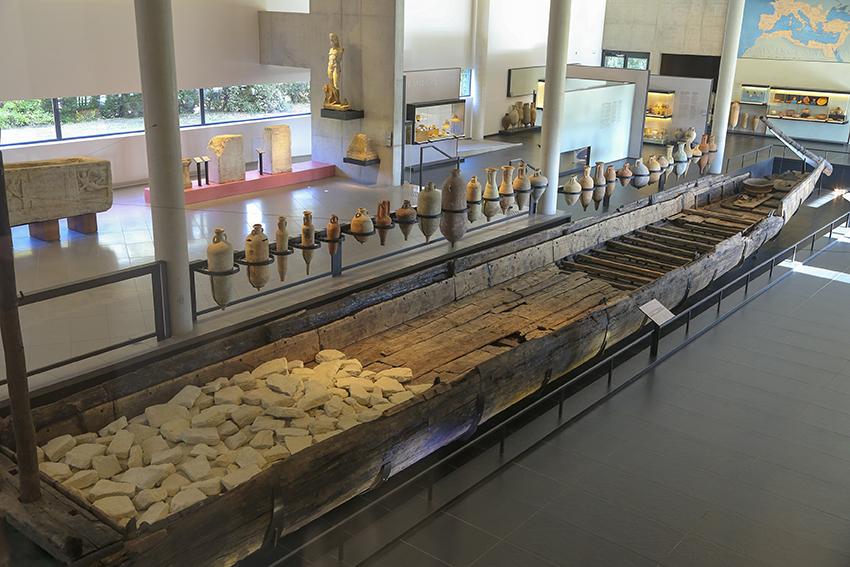

MUSEUM HISTORY


The genesis of the museum :
In 1574, the collector Lantelme de Romieu published a book that described the story of the city of Arles: The History of the Antiquities of Arles was a real revelation for the cultured public. Collections of coins, statuettes, vases, cippuses, inscriptions or simple objects of curiosity came to light: from this moment, the pride of being Arlesian was exalted in the search for the vestiges of the past that revealed the magnificence of the ancient city! The inheritances of collectors, the acquisitions of Arlesian consuls and religious orders gradually joined public collections. Over the years, several places in the city became places of exhibition such as the Town Hall or the Archbishops’ Palace. However, it is the members from the Minimes religious order, settled in the famous necropolis of the Alyscamps, who welcomed the most important collection of vestiges in 1784. They created the 1st real public museum of antiquities in the nave discovered at Saint-Honorat church. Unfortunately, the collection was neglected and looted during the French Revolution. In the early 19th century, upon order of Charles Delacroix, Prefect of Bouches-du- Rhône and Jean-Antoine Chaptal, Minister of Interior, the most beautiful pieces were to be redistributed between the Louvre Museum in Paris and the History Museum in Marseille. Fortunately, in 1805 the Arlesian Pierre Véran succeeded in obtaining a free lease of the Sainte-Anne church by imperial decree, which was followed in 1808 by a prefectural decree organising the transfer of collections in the church, thus avoiding the dispersion of the city’s heritage. In 1830, the gigantic work of clearing the amphitheatre and demolishing the two hundred and twelve houses that were located there, ended. The impact of the operation encouraged the same thing to be done in the antique theatre in 1833. These sites, as well as excavations organized in various points of the city, particularly in the Alyscamps during the works for the PLM railways (Paris-Lyon-Mediterranean), fostered the discovery of many objects that enriched the collections. Sainte-Anne’s church became too small to properly accommodate all the antiques. The abundance of works lead the archaeologist and curator Fernand Benoit - also discoverer of the Barbegal Roman factory - , to create in 1936 a lapidary museum of Christian Art in the former Jesuit church, unfortunately splitting the collections into two. As the two disused churches were quickly congested, his successor, Jacques Latour, stored away the ceramic collections and all the small bronze and iron objects as well as the bone artefacts.
A modern museum
In the 1960s, it became clear that only the creation of a new museum would make it possible to properly gather and host the collections, ensure scientific coherence, future research and finally meet the expectations of various audiences. But the surface area necessary for such an ambitious project would likely exclude the choice of a location in the old city centre... In December 1968, Pierre Quoniam, museum inspector, supported by Jean-Maurice Rouquette presented the scientific programme of the future museum during an ICOM (International Council of Museums) seminar in Mexico City.
The principle of a new construction was agreed upon: an innovative design affirming a strong presence in fitting with the masterpieces of Antiquity. The project had to find an anchor point with a major archaeological element of the city: the original choice of the Alyscamps site could not be retained, so the solution of the Roman circus was chosen. As the excavation of this immense 450 metre long and 101 metre wide building started, the city of Arles gradually acquired the land and the plots located around the circus, an almost six-hectare peninsula, neglected urban wasteland between the old centre and the outlying district of Barriol. Twenty years of effort were required between the presentation of the programme in 1968 and the laying of the 1st stone in 1988 which lead to the birth of the museum.
The "Blue Museum"
Following an architectural competition, the construction of the building was entrusted to the architect Henri Ciriani in 1983. Faithful to the founding idea of Jean-Maurice Rouquette’s project, he created a building that would allow the fulfillment of these fundamental missions:
- Conservation, relay and presentation of all vestiges;
- Restoration, study and publication of this heritage;
- Access to documentation, training and mediation of archaeology and heritage for all audiences.
Following a triangular floorplan, the building designed by Henri Ciriani perfectly meets the tripartite distribution of the museum’s functions: the scientific wing coded in red, symbolic colour for work; the all-white cultural wing, symbolic image of the spirit, harmoniously encircles the central space of the permanent collections. Placed near the entrance, green, colour of aged metal, evokes the trace of time. The centre of the composition is a triangular patio in which stands a monumental staircase giving access to the terraces. As a tribute to the brightness and the intensity of the Arlesian sky, Henri Ciriani chose to cover the walls outside the museum with plates of blue enamelled glass. At the heart of the plan, the collections include archaeological records from the Neolithic period to the end of the Late Antiquity, documenting the entire development of Arles and its surrounding region.
With his concept of a "museum city", Henri Ciriani intended to create a space where the visitor is invited to wander freely in the museum as if in a city. The circular route is developed around the central patio and leaves visitors the choice to walk around and discover the different themes at their own pace or in chronological and thematic order. The enhancement by natural light was one of the project’s most important priorities. It is diffused laterally, dripping from the ceiling and is modulated via the wall adjacent to the stairwell to control the high level of Arlesian summer sunshine. Large openings create an emotional transparency over the banks of the river. Light is also used to distinguish the different exhibition’s spaces: the pre-Roman period is displayed in a subdued atmosphere, conversely, the spaces dedicated to the Roman period benefit from a brightness that fades again when the theme of death is addressed at the end of the tour.


2013, Museum Extension
Following a major Rhône flood in December 2003, a mission led by the Drassm (Department of Underwater Archaeological Research and Submarine Research/Ministry of Culture), made an extraordinary discovery on the right bank of the Rhône: the wreck of a flat-bottomed boat, a Gallo-Roman barge. At the time of its discovery, only a small part of the back of the wreckage emerged from the sediments. Several expert appraisals, surveys and excavation missions conducted between 2005 and 2010 by the archaeologists of the Arkaeos association, the Camille Jullian Centre (archaeology laboratory of the University of Aix-Marseille and the CNRS) and the museum, revealed a beautifully well-preserved boat, sunk in the waters of the Rhône with its last cargo, the boatmen’s on-board furniture and their navigation equipment.
Of exceptional scientific interest, this wreck also had all the best assets - from a museographic point of view - to be shown to the public. Baptized "Arles-Rhône 3", this barge was taken out of the Rhône waters in 2011 to be restored and thus joined the very exclusive club of boats found complete (or almost complete) in excavation, refloated and presented in a museum (such as the Vasa in Stockholm, the Mary Rose in Portsmouth, the Viking ships in Oslo...). Exhibited since October 2013, at the end of a formidable scientific, technical and human adventure involving about a hundred people (archaeologists, divers, curators, restorers, stage managers, PR, coordinators, archivists, photographers, architects and scenographers…), the wreck is displayed in the extension of the museum specially built for this purpose.
